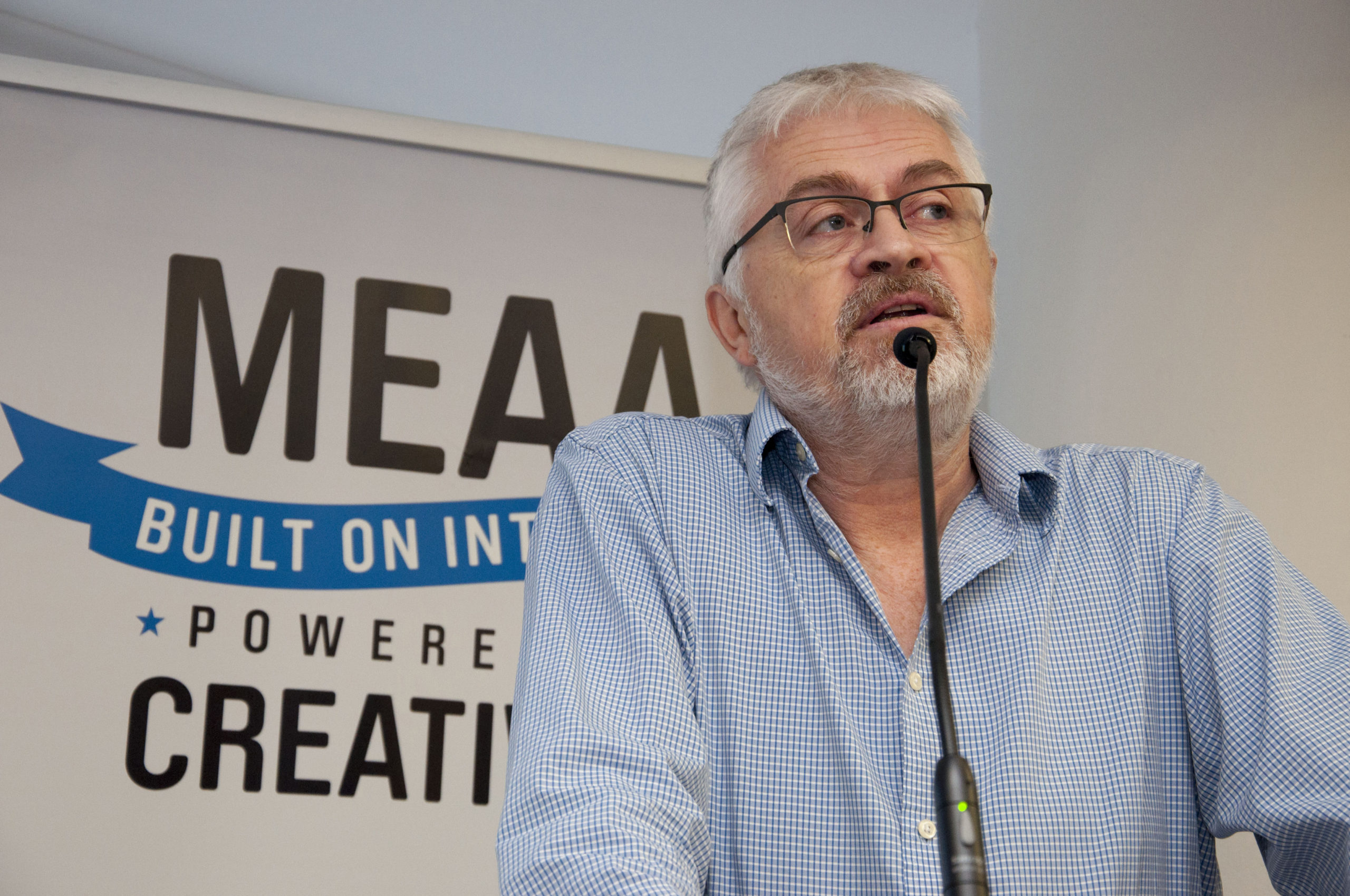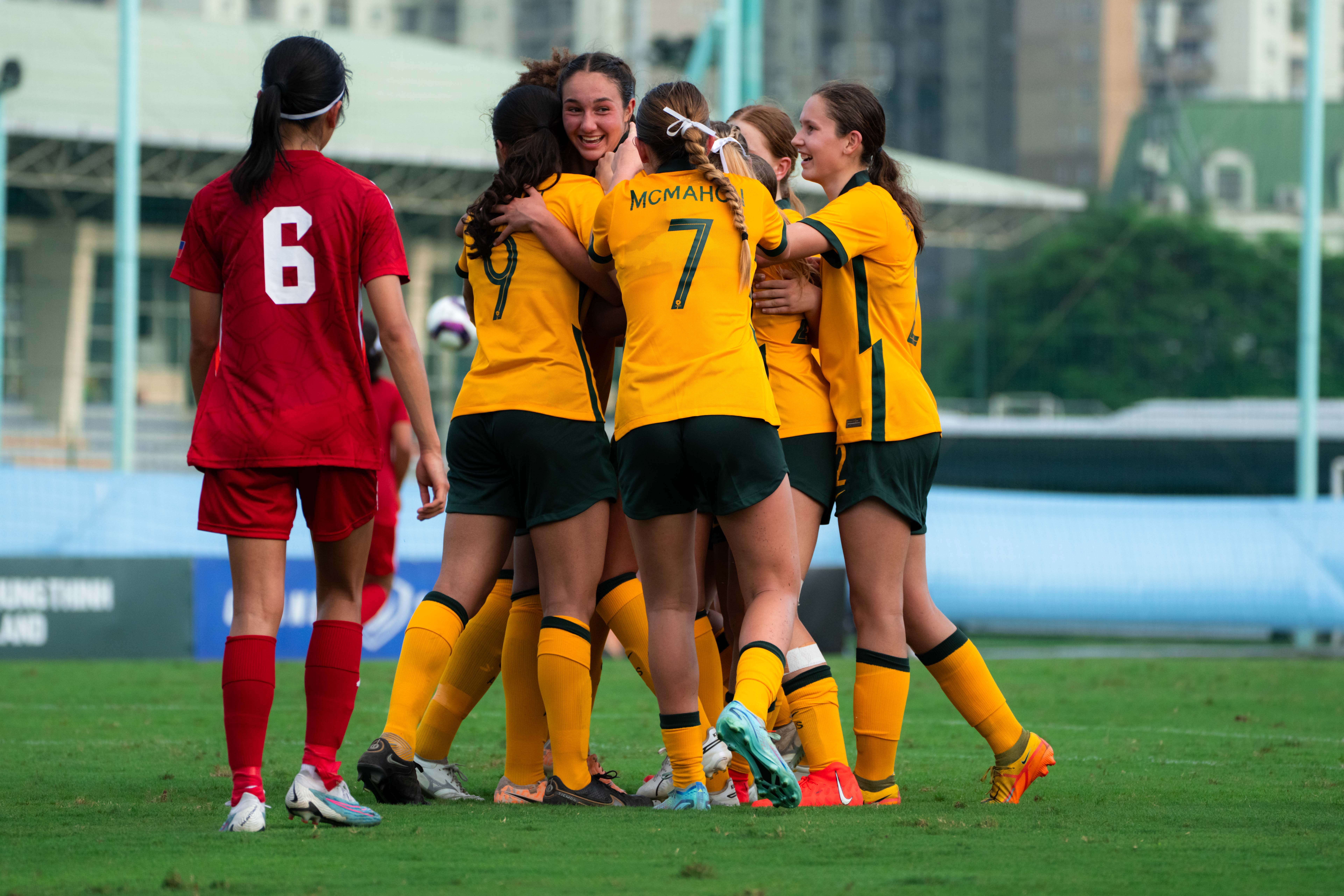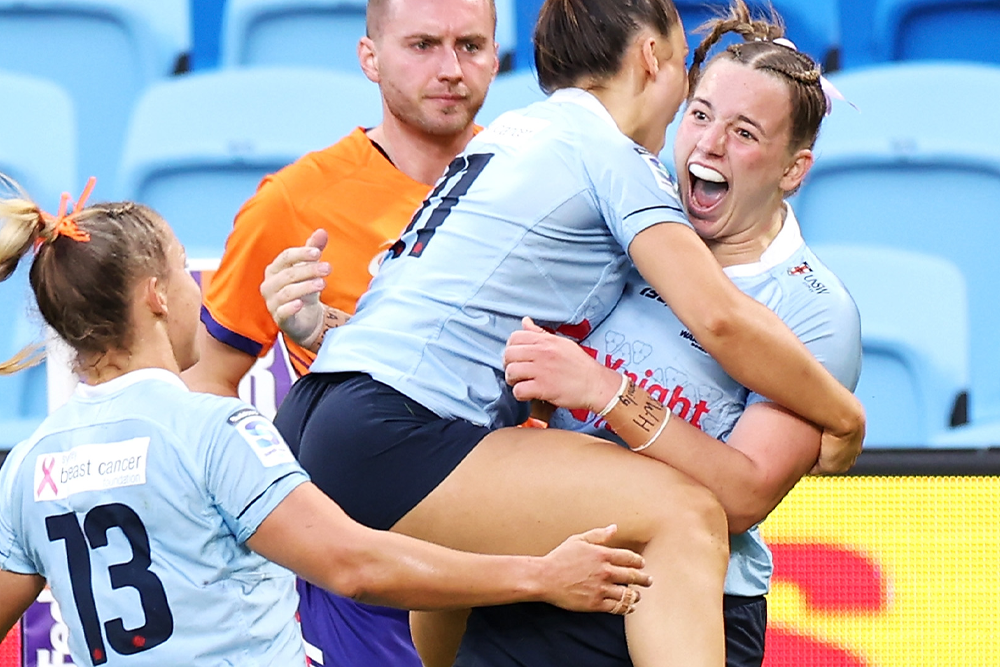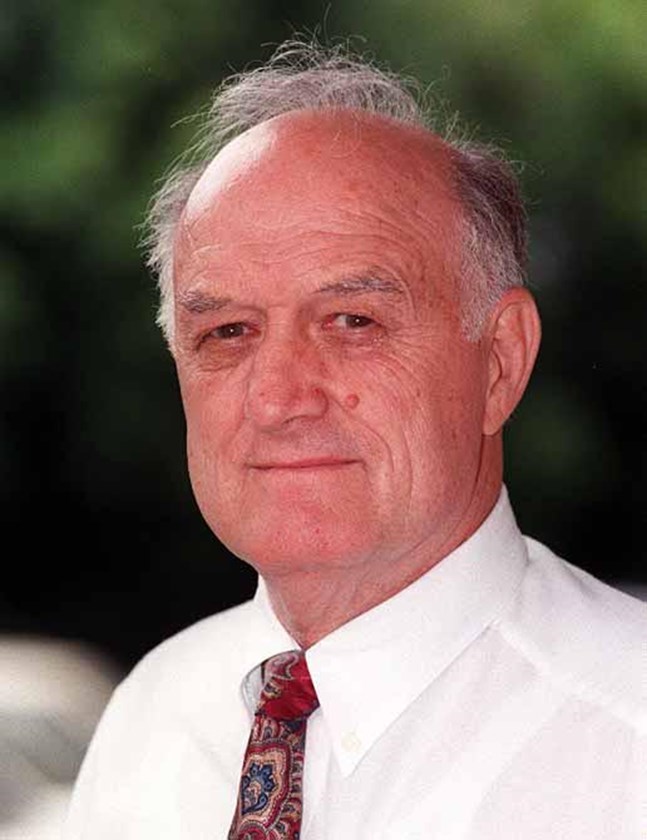This is an edited version of the opening address to the 2020 MEAA Federal Council in Sydney on February 14 by Federal President Simon Collins.
I wish to acknowledge the traditional custodians of the land on which we meet, the Gadigal people of the Eora nation, and to pay my respects to their elders, past, present and emerging. I also recognise the Aboriginal and Torres Strait Islander people who are attending this meeting.
Welcome everyone to this meeting of the MEAA Federal Council.
To the many familiar faces I see before me, thank you for your ongoing commitment to our union.
And a particularly warm greeting to those among you who are attending their first ever Federal Council.
Last year’s MEAA elections saw us refresh the ranks of our Federal Council with 28 new faces elected: 12 from the Media section, nine from Equity, five from Entertainment, Crew and Sport, and two from the Musicians section.
We are especially pleased to see signs of greater diversity among our elected officials with four Indigenous Australians now on Federal Council, including the first ever Indigenous representative from the Media section. We still have a long way to go before we are truly reflective of contemporary Australian society, but we are heading in the right direction.
We have also a new leadership team for the ECS section following the election of Fiona Donovan as president and Rosemary Westmore as vice-president.
Whichever section or state you come from, you all have in common a dedication to the values of unionism, to advocating for your fellow workmates and for your industry and your profession. On behalf of MEAA, I thank you for choosing to step up to the plate to be a voice for our 15,000 members.
Most of you will have attended national section committee meetings yesterday which approved the strategic plans for each section of the union. These plans are the critical road map we have laid out for ourselves, identifying the priority areas for industrial and workplace campaigning and the tactics and tools needed to win and grow.
Here at Federal Council we set aside our allegiances to our particular sections for two days and work together on how to build a stronger union as a whole.
Federal Council is also a rare opportunity to step outside of the bubble of your own career and build networks with other workers in the media, entertainment and arts industries and I encourage all of you to make the most of the opportunities during the breaks and at dinner tonight to meet people from outside of your section and your branch.
***
In a few minutes, you will hear from Paul Murphy as he outlines the current state of the union but before he does, I’d like to lay out what I see as the challenges and the opportunities facing us over the next few years.
Let’s begin with the most fundamental issue of all: membership growth.
The good news is that since Federal Council last met in February 2018, our membership has not only held steady, but increased slightly. This is in sharp contrast with many other unions, who have seen dramatic falls in membership forcing some to consider merging.
Delving deeper, while the Media section’s membership has continued to be impacted by the overall decline in employment in the sector, those falls have been arrested and we now have a platform from which to grow again.
Equity’s membership is unchanged, while the ECS section has grown by 9%, largely due to the continued focus on screen technicians whose membership broke through the 1000 barrier in mid-2018 and has continued to climb.
A major success story has been in the Musicians section, which grew by 30% in the past year alone following the relaunch of the freelance musicians’ membership and an associated industry campaign. We now have more than 1000 members in the Musos’ section for the first time in our history, and if the growth continues at the current pace, freelance musicians will outnumber orchestral musicians sometime this month.
Of course, raw membership numbers should never be the sole benchmark of the success or otherwise of a union.
But to thrive as a union we must maintain a sharp focus on our membership numbers, not only for financial reasons with 80 cents in every dollar of revenue coming from membership fees, but also to have the collective strength in workplaces and industries to deliver tangible results and change for our members.
The challenges are great: each year, we recruit or reactivate more than 4000 members – a quarter of our overall membership – just to stand still. What does this tell us? That we also lose about 4000 members a year for various reasons. This means our income is incredibly precarious.
While we have grown in headcount, our membership income has dropped below what it was when the 2016 strategic plan was launched. Most of that growth in membership has been in lower fee payers while decline continues in higher fee payers.
We must be ambitious, which is why our strategic plan sets a target to grow our total membership income to 1% above its 2016 level by 2024.
***
The impediments confronting MEAA are not unique among unions. We face structural and technological change to the industries we operate in, particularly from digital technology. The breakdown of traditional and permanent models of employment leading to a corresponding increase of insecure work. We are operating in a political environment which is hostile to unions and workers. And, there has been a substantial loss of faith in our institutions including in unions, leading to a trend that fewer people are “joiners” than a generation ago.
We all know the story and understand the reasons. What will make the difference between failure and success will be how we respond.
Standing still is not an option. Doing things the way we always have is not an option.
We have to be ambitious and prepared to take risks. Old models of behaviour must be stress-tested and where they are found wanting, new ideas embraced.
To remain strong and relevant, we need to adapt to changed circumstances, to be innovative and to understand how our members’ needs are evolving. We also need to be prepared to explore new territories and to tailor membership options to suit the workers of today.
The experiment of Musicians Australia is an example of this approach. Freelance musicians are a notoriously difficult group to organise because they have no fixed workplace, no fixed employer, and they frequently work alone or in small groups, travelling from gig to gig. Previous attempts to organise them have ended in frustration and failure.
But since the launch of Musicians Australia at the end of 2018, we have doubled our freelance muso membership to almost 600.
How was this achieved? Firstly, through careful research that we might fully understand the nature of work in this sector and the barriers to change. We need to identify how we might empower these workers.
Secondly, we launched a cheaper membership option specifically for freelance musicians on low incomes.
Thirdly, and most significantly we employed digital organising strategies and social media, to refine the message, reach out to potential members, identify future leaders and organise members to come together collectively.
It is early days and we have a long way to go, but this campaign suggests a model that could be adapted for other workers, such as freelance journalists.
Most importantly, success or failure, Musicians Australia shows we should not be afraid, as a union, of taking on a challenge.
Another story I would like to highlight is in book publishing. Two years ago, MEAA had a negligible presence in this sector, even though it would seem a natural fit with our Media section. It had simply been neglected as an area for potential union membership, and the lack of a union presence has seen poor wages and conditions for a highly-educated and skilled – and predominantly female – workforce.
To turn that around MEAA has been developing workplace leaders and building solidarity across the various publishing houses for an industry wide strategy. We have been educating new members about how to initiate bargaining with their employers through information sessions and peer-to-peer conversations, and supporting them through the negotiations.
Last year, in the face of considerable employer resistance which included disciplinary threats against our head delegate, we finalised our first enterprise bargaining agreement in publishing with Penguin Random House and members there have begun to enjoy the benefits of that EBA. We are now seeking to do the same at Hardie Grant, and have recruited new members at a range of other publishers.
I mention both of these examples to illustrate the rewards that can come to our union from being innovative and ambitious.
Both the musicians and publishing campaigns have had a digital organising component, including targeted messaging on Facebook, the use of Facebook groups to curate discussions about the value of unionising, and – in the case of publishing – Twitter to quickly amplify the message of a growing and relevant union.
We will be investing heavily over the next few years to develop and enhance our digital organising capability. In this space we will identify and develop leaders, discuss issues, encourage members to share their stories and generate member-driven content, all to recruit new members and build power.
***
This doesn’t mean abandoning the workplaces where we already have a strong presence.
Of course there is a still a place for enterprise bargaining and large-scale organising of large workplaces. Digital organising will not be appropriate for those self-contained workplaces where we already have collective agreements and high membership density.
But it is equally true that only organising around a diminishing number of traditional workplaces is a slow but sure path to decline and irrelevance.
If we are to serve our members in the modern workforce effectively, we have to be prepared to interrogate what is the best model for our union and the best way of achieving that. We have to be responsive to the needs of workers in this environment, to go where the potential members are, to research and understand what motivates them and what they are looking for from a union, and we need to talk to them in their language.
Not all workers require or want the full service union model. Not all workers have a fixed employer or place of work. We must think bigger than individual workplaces and campaign across industries, not just for pay and conditions, but for funding and respect and recognition.
And we have to be prepared to cede some control to our members, to give them the autonomy to determine what issues are important and to steer their own campaigns. We must build trust by being transparent and ensuring our governance is second to none.
***
We also need to ensure that members and potential members identify with MEAA as being a union that shares their values.
Robust campaigning and advocacy on policy issues engages a union with its members and non-members and helps to build the relationship and to identify activists.
MEAA already has enormous goodwill and credibility as an advocate for its industries and representative of the interests of its members.
Workplace bargaining campaigns will continue to be important, but strong industry-wide campaigns can also unite members and non-members around a common issue with all sorts of positive spin-offs for the union.
Our members will reward us if we think big, if we are ambitious and courageous, and if we provide the leadership they seek from their union.
That is why we will continue to lead campaigns on issues like press freedom (‘Your Right To Know’), support for the screen industry (‘Make It Australian’), and an upcoming cross-sectional campaign around arts funding and arts policy.
This means not only making submissions and appearing before government inquiries, but being highly visible and vocal champions for our industries and the workers in them. And we should be prepared to throw the full weight of the union behind these campaigns.
We will also have to play our role in the broader campaigns of the union movement to improve Australia’s workplace laws which are tilted against workers.
The re-election of the Coalition last year means we are left to fend in a hostile political and industrial environment with a government that is hell-bent on attacking and weakening unions and their ability to represent workers.
High on the government’s agenda is the punitive Ensuring Integrity Bill, the so-called ‘union busting bill’.
This is an anti-democratic piece of legislation designed to intimidate unions, making it harder for workers to win pay rises and protect their jobs.
It is not taking place in isolation but is part of a pattern of increasing authoritarianism that seeks to silence truth tellers, whether they be journalists, artists or unions.
Do not believe the propaganda that this is a Bill just about the CFMEU or so-called ‘rogue unions’.
The Ensuring Integrity Bill would allow any employer or other interested party to make an application for an order against our union or its officials over what we would consider legitimate industrial action.
Under this scenario, the industrial action taken by Fairfax journalists in 2017 over job losses could have resulted in deregistration of our union.
This is an issue that threatens our very existence as a union, and we must wholeheartedly oppose it.
***
Despite often seemingly insurmountable odds, our union not only survives, but thrives.
As long as we remain united, are ambitious, and committed to the fundamental role of a union – to advance pay and conditions, protect rights at work, ensure healthy and safe working environments, and give workers a voice – then we will not only meet whatever challenges are thrown at us, but overcome them.
Over the next two days, we have a unique opportunity to debate and to make decisions that will set the future direction of the union. I look forward to it and declare this meeting open.









